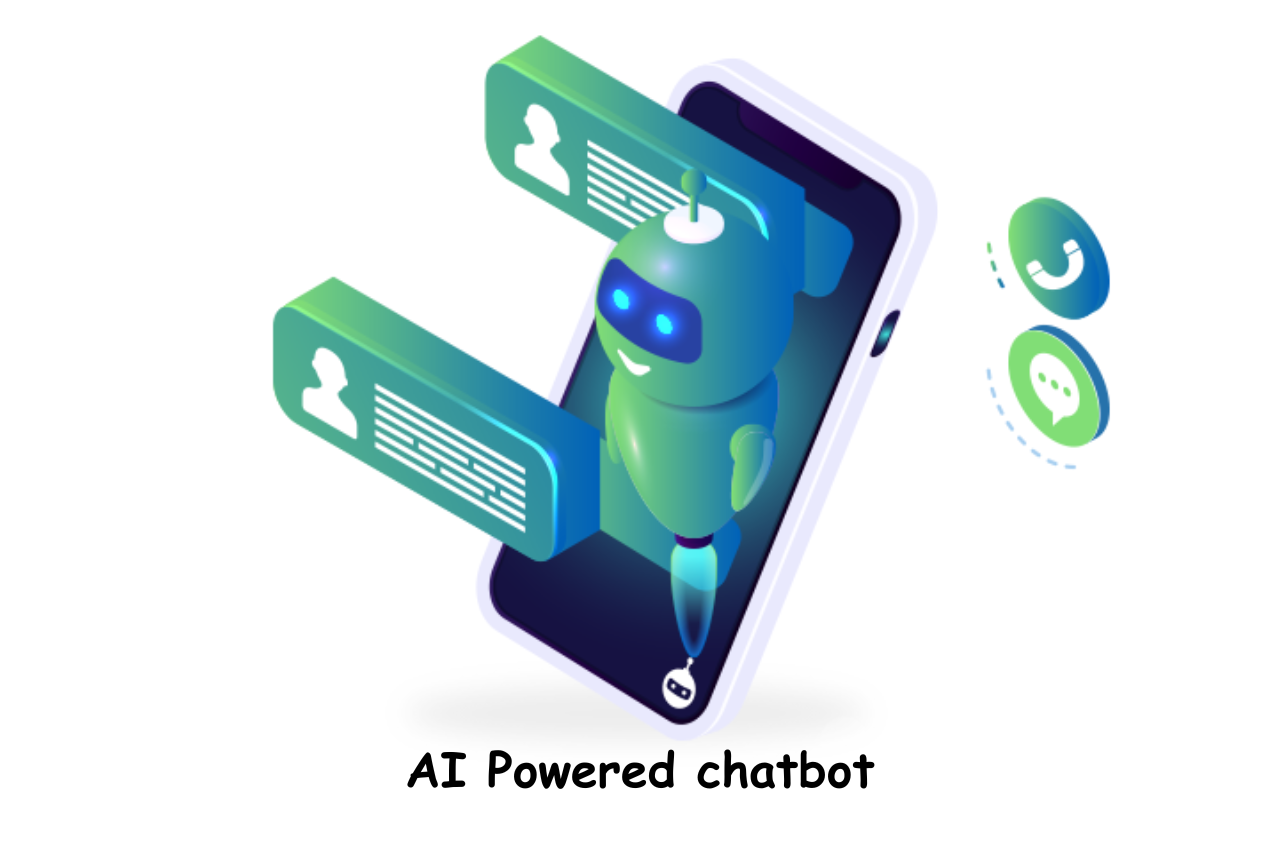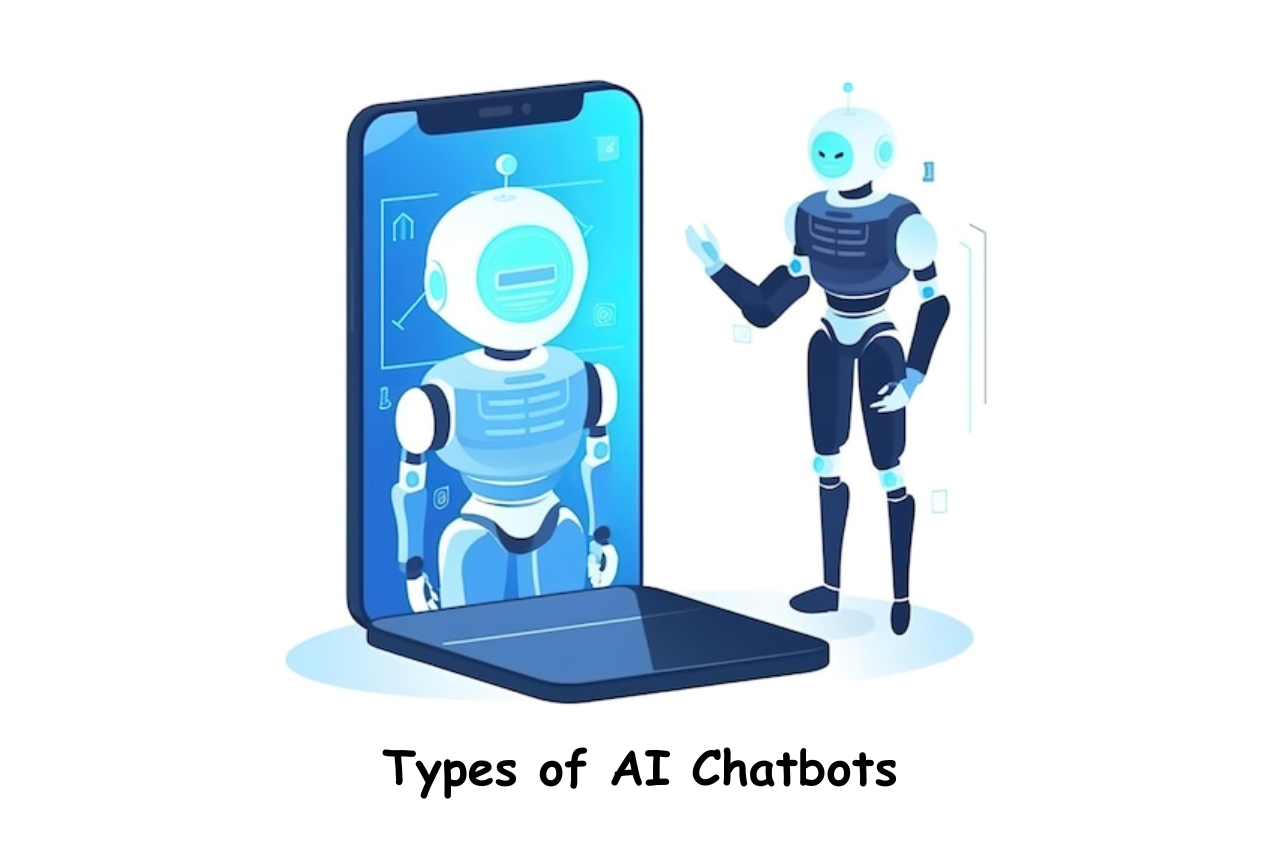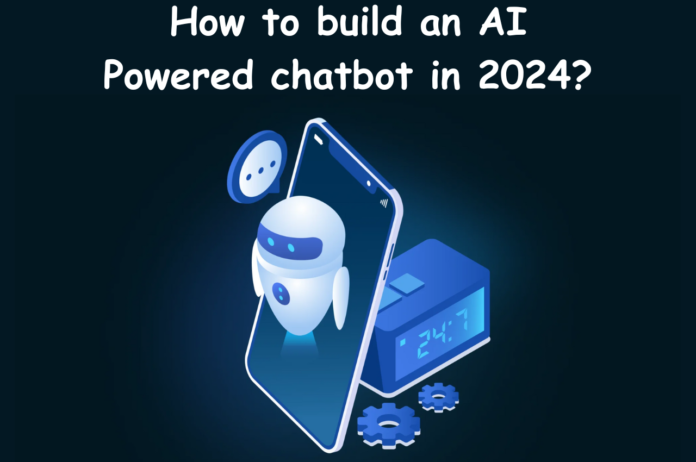In 2024, the world could witness a revolutionary transformation with the development of AI Powered chatbot. Gone are the days when chatbots were limited to providing simple answers. With the advent of advanced models like ChatGPT, users can now experience the power of contextualized, coherent, and personalized responses.
The potential benefits of AI Powered chatbots for businesses are vast, and the demand for them is steadily increasing. This is evident in the booming market for chatbots, which is projected to reach a staggering $1.25 billion by 2025, as per statistical predictions. How to build an AI powered chatbot in 2024 is discussed in detail in today’s article. So, if you want to build an AI powered chatbot for your company then study this tutorial thoroughly.
What are AI Powered Chatbots?
An AI Powered chatbot functions as a virtual assistant for your website, utilizing artificial intelligence to engage in human-like conversations with users. Its purpose is to streamline customer support, provide information, and facilitate shopping or booking processes. Essentially, it serves as a highly beneficial and conversational robot that tirelessly addresses inquiries.
An AI Powered chatbot is a computer program that emulates human communication. These chatbots are widely utilized in various online scenarios, ranging from customer service to sales.
With the continuous advancements in AI chatbot technology, these tools have evolved from basic utilities to sophisticated entities capable of engaging with consumers in a manner that closely resembles human interaction. A prime example of this is seen when customers can ask questions about a specific product or service and receive immediate, personalized responses, showcasing the effectiveness of Conversational AI through chatbots.
The ChatBot Design
Developing the design for your ChatBot is a crucial step that requires your imagination and creativity. This initial design plays a vital role in the entire process and should be carefully considered while building your ChatBot.
- Will the ChatBot be accessible to the public or limited to internal use only?
- What type of ChatBot do you plan to create?
- Are you planning to build the ChatBot based on a pre-existing template or will you develop it from scratch?
- Will there be a username or nickname associated with the ChatBot?
Once the ChatBot design is finalized, it’s time to implement the actual ChatBot logic. If needed, you can seek assistance from the community. There are well-designed ChatBots available with documentation that can provide inspiration and guidance for constructing your own ChatBot.
The Components of an AI ChatBot
An AI ChatBot requires two essential components:
- Functional elements
- User interface features
Together, they form the basis for the solution you aim to develop.
Functional elements
The functional elements are essential in the creation and operation of your AI Powered chatbot. These elements encompass the AI assistant utilized in the chat interface and the software responsible for generating chat messages. However, there may be instances where the existing components are unsuitable, hindering the development of an efficient AI Powered chatbot.
User interface features
The ChatBot user interface can be enhanced with various UI elements that facilitate its creation. There is a wide range of UI elements available for utilization.
Among the crucial UI elements are the input field, search field, and error area, as they contribute to the user-friendliness and efficiency of the ChatBot. It is essential to select the appropriate input type, and visual elements like boxes can be incorporated for this purpose.
Additionally, you have the option to include a checkbox or button in the user interface, as well as create an error area, form field, or welcome area. The interface element enables this flexibility. A well-designed user interface ensures ease of use and efficient identification of user and information requirements.
Furthermore, there are other user interface elements that can be employed to develop an AI Powered chatbot. These encompass icons or clickable elements that enable user interaction with the ChatBot. Clickable elements can also be linked to clickable fields and pop-ups. These pop-up boxes appear whenever a user intends to engage with an AI Powered chatbot. The ChatBot you are designing can support interactions by expanding and collapsing boxes.
How Does an AI Powered Chatbot Work?
An AI Powered chatbot is an automated conversational AI that imitates human interaction, performing programmed tasks triggered by specific cues and responding through web or mobile applications. Similar to virtual assistants, these bots offer user support in a way that resembles human conversation, providing convenience and efficiency.
The primary type of chatbot is the question-answer bot, which uses predetermined rules and tree paths to offer predefined solutions for specific queries. Although it lacks sophisticated AI, this chatbot relies on a knowledge base and pattern recognition.
By incorporating artificial intelligence programming, the chatbot is elevated to a more convincing and lifelike level. Advanced AI-based bots utilize databases, deep learning, machine learning, and natural language processing (NLP) to identify conversation patterns, enabling them to engage users realistically.
The goal of AI Powered chatbot programs is to delight customers by utilizing an AI-driven algorithm that scans customer support documentation and past conversations for text patterns similar to the original inquiry. This allows an AI Powered chatbot to provide accurate and prompt responses.
Groundbreaking chatbots such as Apple’s Siri, Amazon’s Alexa, and Google Assistant demonstrate the power of advanced generative algorithms. By applying specific rules and leveraging past interactions, these bots offer insightful and innovative responses to a wide range of queries, showcasing precision and creativity.
How to build an AI Powered chatbot in 2024?
 The initial step in the development of an AI powered chatbot involves making decisions regarding its purpose and scope. This includes determining the specific tasks that the chatbot will be designed to perform. Common applications of chatbots include customer service, providing information to users, and assisting with e-commerce activities. Once the purpose has been established, you can proceed to the subsequent stages of development.
The initial step in the development of an AI powered chatbot involves making decisions regarding its purpose and scope. This includes determining the specific tasks that the chatbot will be designed to perform. Common applications of chatbots include customer service, providing information to users, and assisting with e-commerce activities. Once the purpose has been established, you can proceed to the subsequent stages of development.
1. Select a suitable platform for building your chatbot. There are numerous AI powered chatbot development platforms available, such as Dialogflow, Amazon Lex, IBM Watson, and Pandorabots. Each platform has its own strengths and weaknesses. It is important to choose a platform that aligns with your chatbot objectives and offers robust natural language processing (NLP) capabilities, as well as easy integration options.
2. Design the conversational flow of your chatbot. This involves mapping out the various types of questions that users may ask and determining how the chatbot should respond to each question. Categorize these questions into different intents, such as greetings, frequently asked questions (FAQs), and placing orders. Additionally, outline the possible conversation flows that the chatbot may follow. It is also crucial to define fallback intents to handle questions that the chatbot may not understand.
3. Establish a comprehensive knowledge base for your chatbot. This involves collecting and organizing all the necessary content that the chatbot will require to operate effectively. This content may include product catalogs, support articles, and company information. It is important to structure this data in a manner that facilitates easy retrieval. Providing accurate and up-to-date information to your AI powered chatbot will significantly enhance its conversational abilities.
4. Integrate the NLP capabilities of your chosen platform. Most AI powered chatbot development platforms offer NLP functionalities to analyze user input and match intents. Take the time to review and optimize the default NLP settings, ensuring that they align with the terminology commonly used by your target users. Additionally, train the NLP engine by providing it with sample conversations to improve its understanding and accuracy.
5. Personalize the responses of your chatbot. Develop messages that the chatbot will deliver when matched with specific intents, aiming to mimic natural human conversations. It is beneficial to create multiple variations of these messages to make the conversations appear more dynamic. Furthermore, program conditional logic to enable AI powered chatbots to deliver personalized information based on user interactions.
6. Determine the dialog strategy that your chatbot will employ. This involves deciding how the chatbot will handle transitions between different conversation topics and maintain context.
7. Facilitate connectivity. Ensure smooth and uninterrupted connectivity across various communication channels such as the internet, mobile applications, text messaging, and social media platforms that users prefer for their conversations.
8. Validate and improve. Thoroughly examine the developed AI powered chatbot by testing it with real user inputs. Gather feedback, identify areas of improvement in understanding, and enhance natural language processing (NLP) capabilities and responses. Incorporate additional training samples and retest until achieving satisfactory performance.
By adopting a structured development approach, businesses can create efficient AI powered chatbot that effectively engage with audiences and provide value. Prioritizing the prototyping of key components enables quicker iterations. Additionally, it is crucial to plan for ongoing maintenance and continuous enhancements after the chatbot’s launch.
What is the AI Chatbot Market Size in 2024?
The global chatbot market reached a value of around USD 5,132.8 million in 2023, with forecasts indicating a compound annual growth rate (CAGR) of 23.3% from 2024 to 2030.
Businesses are increasingly adopting customer service applications to cut down on operational expenses, propelling the market towards growth. Chatbots, which are AI-powered collaborative tools with specific rule sets, are tailored for engaging in text-based conversations with users.
These chatbots are integrated with various messaging platforms, catering to users across different industries. Anticipated advancements in AI and machine learning technologies are set to improve chatbot capabilities, further boosting market demand.
Types of AI Chatbots
 Different types of AI Powered chatbots cater to specific needs and functions, making it essential for businesses and developers to grasp the variances between them in order to create successful conversational agents. Here are a few popular categories of AI Powered chatbots:
Different types of AI Powered chatbots cater to specific needs and functions, making it essential for businesses and developers to grasp the variances between them in order to create successful conversational agents. Here are a few popular categories of AI Powered chatbots:
Rule-Based Chatbots
Chatbots function based on a predetermined set of rules, following specific pathways to respond to user inputs. While lacking the complexity of AI, they are effective for simple tasks and situations.
AI Powered Chatbots
AI Powered chatbots utilize machine learning, NLP, and artificial intelligence to understand and address user queries. They improve over time, enhancing their ability to engage in more intricate conversations.
Scripted Chatbots
Chatbots with scripts adhere to predefined scenarios, suitable for predictable conversation flows. However, they may struggle with unexpected user inputs.
Generative Chatbots
Generative chatbots, often utilizing advanced AI models, can dynamically generate responses. They are not limited to predefined patterns and offer more natural and context-aware interactions.
Transactional Chatbots
Tailored for specific transactions, these chatbots excel in tasks like order placement, appointment booking, and product information provision. They are focused on efficiently achieving specific objectives.
Conversational Chatbots
Conversational chatbots prioritize natural, human-like interactions to simulate real conversations, making them ideal for customer support and engagement. They often incorporate sentiment analysis for better understanding user emotions.
Informational Chatbots
Informational chatbots are designed to provide users with information, useful for scenarios like answering FAQs, delivering news updates, or offering educational content.
Voice-Activated Chatbots
Chatbots that respond to voice commands enable hands-free interaction for users. Voice-activated chatbots are commonly integrated into virtual assistants and smart devices.
Social Media Chatbots
Chatbots on social media platforms function by interacting with users through messaging apps, facilitating conversations, addressing inquiries, and offering assistance.
Hybrid Chatbots
Hybrid chatbots merge various features from different types to capitalize on their respective advantages. They can utilize rule-based responses for specific situations and AI-powered capabilities for more interactive engagements.
Having a comprehensive understanding of these different chatbot types empowers businesses to select the most appropriate option according to their unique requirements and goals. Whether prioritizing efficient transactions or promoting authentic conversations, choosing the right chatbot type can greatly enhance user experiences.
Features of AI Powered Chatbots
AI Powered chatbots leverage advanced technologies to offer a wide array of features that enhance their effectiveness across different applications. Here are the key characteristics that define modern chatbots:
- Natural Language Processing (NLP) enables chatbots to comprehend and interpret human language, allowing them to understand user inputs, identify intent, and respond in a conversational manner.
- Machine Learning (ML) empowers chatbots to continuously learn from data and user interactions, leading to improved responses over time through ML algorithms.
- Multi-Channel Support ensures that chatbots can seamlessly operate across various platforms like websites, messaging apps, and social media, enhancing accessibility and engagement.
- Personalization is a key feature of advanced chatbots, as they analyze user data to tailor responses based on user preferences, behavior, and history for a more personalized experience.
- Context Awareness enables chatbots to remember past interactions, maintaining continuity in conversations and enhancing user experience by referencing previous discussions.
- Integration Capabilities allow chatbots to integrate with different systems and platforms such as CRM software, databases, and e-commerce platforms, enhancing functionality and enabling seamless data exchange.
- Sentiment Analysis enables chatbots to assess the emotional tone of user inputs, allowing them to respond with empathy and effectively address user concerns.
- Voice and Speech Recognition- Certain chatbots have the capability to recognize and respond to spoken commands, enabling voice interactions. This technology not only enhances accessibility but also provides a convenient user experience.
- Security Features- When it comes to handling sensitive information, security is of utmost importance for chatbots. With features like encryption, authentication, and secure data storage, user data and privacy are effectively protected.
- Transactional Capabilities- Chatbots have the ability to facilitate various transactions, such as making reservations, placing orders, or providing product information. These transactional capabilities make chatbots highly useful in e-commerce and service-oriented applications.
- Learning and Adaptation- Chatbots equipped with learning capabilities can adapt to new information and changing user needs. By continuously learning, they become more effective in handling a wide range of queries.
- 24/7 Availability- One of the key advantages of chatbots is their availability round-the-clock. They are capable of handling user inquiries and providing assistance at any time, thereby improving customer service.
- Analytics and Reporting- Many chatbots come with built-in analytics tools that allow businesses to track performance metrics. This data-driven approach helps in evaluating the effectiveness of the chatbot and making informed improvements.
- Fallback Mechanisms- In situations where a chatbot is unable to understand a user query, fallback mechanisms ensure that such uncertainties are gracefully handled. This feature contributes to a smoother user experience.
- User Authentication- For applications that require secure interactions, chatbots can incorporate user authentication processes. This ensures that sensitive information is accessed only by authorized users.
Understanding these features is crucial for businesses and developers who aim to fully utilize the potential of AI Powered chatbots in enhancing customer interactions, automating tasks, and providing efficient support across various domains.
Bottom Line
AI Powered chatbots are proving to be effective in enhancing operational efficiency, streamlining processes, and enhancing customer satisfaction in various industries such as e-commerce, healthcare, and banking. The widespread adoption of chatbots has the potential to revolutionize technology interaction and business operations, particularly as their utilization continues to grow rapidly. AI-powered chatbots have the advantage of reaching a broader audience and functioning more effectively than human agents. It is conceivable that they will evolve into indispensable tools for businesses across different sectors in the future.
Technocommy is a connecting space, the leading growth and networking organization for business owners and leaders. Do I qualify?


